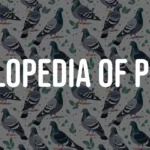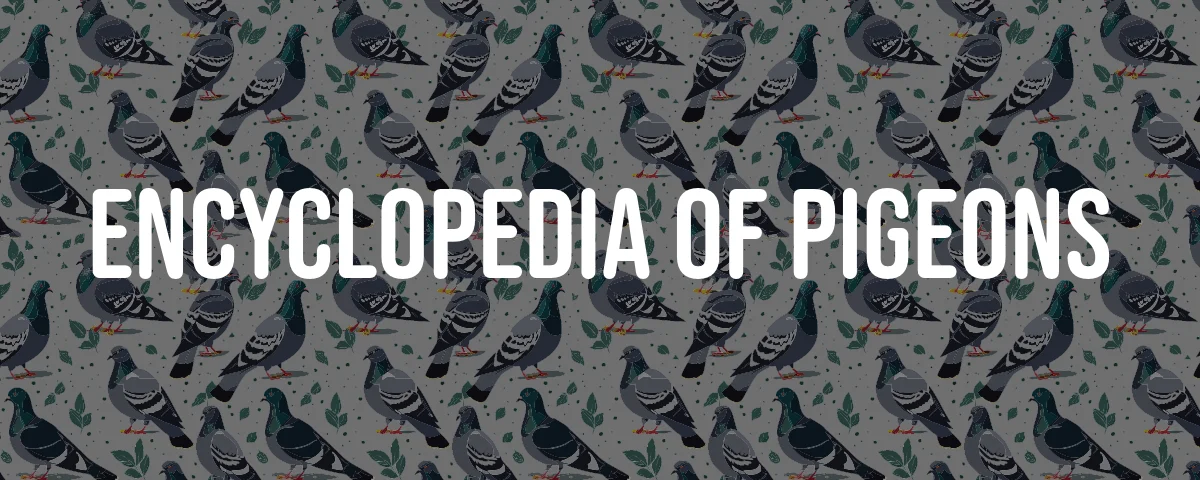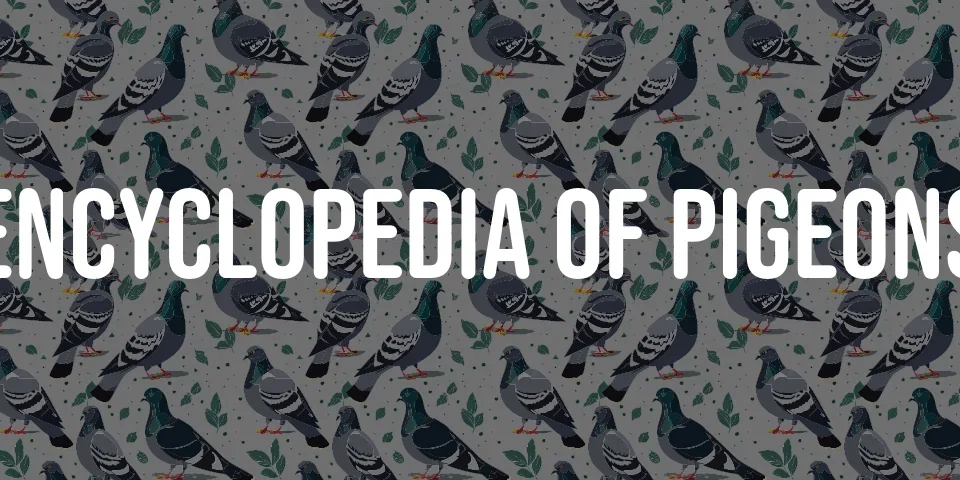Hungarian Magpie Tumbler: Origin and History
Imagine, if you will, a pigeon that carries with it the echoes of empire and the whispers of centuries past. That’s the Hungarian Magpie Tumbler for you—a bird whose roots reach deep into the rich, loamy soil of Hungary, particularly around the town of Törökszentmiklós. We’re talking 18th century here, maybe even earlier, back when coffee was just catching on in Europe and the Ottoman Turks still crisscrossed the continent, sometimes leaving behind more than just architecture and stories.
- some say the ancestors of these birds arrived on the boots—or perhaps in the saddlebags—of Ottoman travelers, drifting in from the remote eastern edges of their realm,
- fast forward a few generations, and those humble birds were transformed, not by magic but by the steady, knowing hands of Hungarian breeders, into a breed that would dazzle at exhibitions and steal the show in aerial displays,
- there’s a certain poetry in the way these pigeons came to represent both the artistry and the competitive spirit of Hungarian aviculture—a feathered ballet, if you will.
Origins in Hungary
If you ever find yourself in the Törökszentmiklós region, you might notice the air feels a bit different—charged, perhaps, with the memories of pigeon wings beating in formation. The Hungarian Magpie Tumbler can trace its genealogy back here, to this very spot, with rumors swirling about its arrival alongside the Ottoman Turks, whose influence can still be tasted in the paprika and architecture of the region.
Over the years, breeders in Hungary didn’t just settle for “pretty good.” Oh no—they zeroed in on what made these birds unique:
- that plumage, sharp and dramatic,
- the kind of aerial moves that make you forget your phone for a moment,
- a certain elegance that walks the fine line between beauty and utility.
In many ways, the evolution of this breed is a love letter to Hungary’s passion for birds—a living testament to the nation’s devotion to making pigeons not just birds, but bold statements in feathers.
Development in Törökszentmiklós
Walk around Törökszentmiklós long enough and you’ll probably stumble upon a local, sleeves rolled up, whistling to a rooftop flock—or perhaps reminiscing about the “old masters” of pigeon breeding. Here, precision was never optional.
- generations of breeders became connoisseurs of the aerial arts, tweaking and perfecting tumbling styles with the kind of obsession usually reserved for violinists and chess players,
- the magpie markings? Not an accident. Years of careful selection made those bold contrasts a hallmark,
- in time, the breed became more than a bird—almost a symbol, a feathered ambassador of Hungarian pride, as likely to show up in a breeder’s dreams as on the winner’s podium at a pigeon show.
This little town, with its quiet streets and watchful sky, became a mecca—a crossroads for anyone who saw pigeon breeding as equal parts science, sport, and art.
Role of Cross-Breeding
Of course, nothing this striking happens by accident. Cross-breeding became the secret sauce. Each generation, Hungarian breeders eyed their flocks with the scrutiny of jewelers, pairing birds not just for looks, but for the whole package: flight finesse, show-stopping colors, a dash of personality.
Through this careful matchmaking, the Magpie Tumbler evolved from a mere passenger of history to a main character, its signature style forged by a collision of genetics and ambition.
Characteristics of the Hungarian Magpie Tumbler
Let’s step back for a second and actually look at one of these birds. The Hungarian Magpie Tumbler isn’t flashy in the way that peacocks are, but there’s an undeniable charisma about it—a kind of tuxedo-clad confidence. The black-and-white plumage is more than just pattern; it’s punctuation. Every feather seems to say, “Notice me, but don’t expect me to stand still for long.”
Medium-sized, with a neck that knows how to hold itself just so, and wings that suggest possibility, these pigeons don’t merely fly—they perform. When they tumble through the air, it’s less about getting from point A to B and more about showing off the journey itself.
And temperament? These are no aloof aristocrats. They’re sociable, affectionate even, quick to bond with their flock or the humans who care for them. It’s like they know they’re special, but they’re happy to let you in on the secret.
Medium-Sized Bird
Not too big, not too small—just right for an aviary or backyard loft. The Hungarian Magpie Tumbler is Goldilocks’ pigeon. Balanced in build, they’re robust enough to pull off those mid-air somersaults, yet nimble enough to slip through the wind without a hitch. Beginners and veterans alike find themselves drawn to this manageable size, which makes training and handling less a chore and more a pleasure.
Beautiful Appearance
Picture a magpie’s crisp wardrobe, then imagine it on a pigeon who knows how to work a runway. These birds didn’t just luck into their looks—each line and splotch is the result of decades (maybe centuries) of human intervention, honed for maximum visual impact. When they take to the sky, those markings become kinetic art, transforming every flight into a moving painting.
It’s this combination of drama and balance that makes them a mainstay at exhibitions—there’s always that hush when a Magpie Tumbler steps into the spotlight.
Good Flying Skills
You haven’t truly seen a pigeon fly until you’ve seen a Magpie Tumbler in action. Their tumbling isn’t just a trick—it’s the heart of their identity.
- watch for the sudden flips, the smooth rolls, the way they seem to defy gravity just for the joy of it,
- precision is the name of the game; every move feels rehearsed, yet spontaneous, like jazz in motion.
These aerial stunts aren’t just for show—they’re a living archive of what happens when you mix natural talent with obsessive refinement.
Appearance and Standard Description
You’d think that after centuries, the look of the Hungarian Magpie Tumbler would be set in stone. Not quite. There’s an ongoing conversation between tradition and innovation, but some things are non-negotiable: balance, poise, and that unmistakable forward-leaning stance—as if the bird is always thinking about its next move.
The head is gently rounded, not bulbous, not pinched—just the right amount of curve. Eyes that flash with the curiosity of a street performer, paired with a beak that’s sturdy enough for daily life, but never clunky.
Wings are the real story here: strong, long, tucked in tight when not in use, but ready for action at a moment’s notice. The tail, too, is no afterthought—sleek, refined, a rudder in the wild blue yonder.
And then there’s the plumage. Dense, soft, yet somehow aerodynamic—a contradiction that works. The magpie markings aren’t just paint-by-numbers; they’re a badge of honor, a visible reminder of the breed’s storied past.
Body Type and Stance
Medium, yes, but with the kind of presence that makes you look twice. Upright, always a hint of forward motion, as if they’re about to launch into something spectacular. It’s a dancer’s posture—poised, but never stiff, ready to turn grace into action at a moment’s notice.
Head, Eyes, and Beak
There’s a certain intelligence in the Magpie Tumbler’s gaze—eyes that seem to scan for opportunity and adventure. The head is smooth, a gentle dome, giving the bird an air of refinement. The beak is Goldilocks-perfect: strong enough for the job, but proportionate, never hogging the spotlight.
Wings, Tail, and Feathering
Here is where the engineering comes in. Wings that fold in with the neatness of a well-packed suitcase, yet when extended, reveal the power of a sprinter. The tail? Think of it as the steering wheel, giving the bird that extra edge in mid-air pirouettes.
- long, sleek, and perfectly aligned for those high-wire acts in the sky,
- feathers that lie flat, smooth as silk, catching the light and the breeze in equal measure.
It’s this attention to detail that makes the breed a favorite among those who know pigeons aren’t just birds—they’re flying marvels.
Magpie Markings and Colors
It wouldn’t be a Magpie Tumbler without those signature markings—a crisp pattern that slices across the body in dramatic contrast. But black and white is just the beginning. The breed comes in a painter’s palette of shades:
- classic black, the little black dress of the pigeon world,
- moody blue,
- fiery red,
- cool silver,
- sunny yellow,
- understated dun.
Yet, no matter the color, that magpie pattern is the anchor, the constant that ties generations together. Each variation is a new riff on an old song—familiar, but with its own twist.
Behavior and Flying Skills
Watching a flock of Hungarian Magpie Tumblers take flight is a bit like catching a flash mob in action—unexpected, coordinated, and thoroughly captivating. These birds don’t just fly, they put on a show, flipping and rolling with the swagger of circus acrobats.
But it’s not all flash. There’s a warmth to them—a friendliness that turns a simple flock into a community. Whether mingling with other pigeons or sidling up to a human who offers a handful of seeds, they embody the best of both worlds: showmanship and sociability.
Acrobatic Flying and Tumbling Flight
The first time I saw a Magpie Tumbler perform its aerial routine, I was reminded of Olympic gymnasts—precision, grace, a touch of bravado. Every flip and roll seems effortless, but make no mistake: this is the product of generations of careful breeding.
Breeders, with the patience of sculptors, have coaxed out these talents, turning each bird into a feathered dynamo. Watching them is like seeing history take wing—an art form that’s alive, evolving in real time.
Friendly and Social Behavior
What’s the point of beauty and skill without a bit of heart? The Magpie Tumbler doesn’t just wow onlookers with its looks and moves; it wins them over with charm. These birds thrive in groups, building bonds that go beyond mere flocking instinct.
Spend enough time with them and you’ll find they respond to familiarity, even affection—there’s a reason so many keepers become lifelong devotees. It’s as if the birds, in their own way, know they’re part of something bigger: a shared story between bird and human.
Breeding and Genetics
Behind every show-stopping Magpie Tumbler is a breeder with the soul of a gambler and the eye of a painter. Selective breeding is more than a science—it’s an art form, with each match made in hopes of striking the elusive balance between beauty, aerial talent, and that indefinable spark.
Genetics, of course, calls the shots behind the scenes. Careful pairings hone those vivid colors and sharp patterns, while ensuring that flight skills don’t get left behind in the quest for good looks.
- want sharper patterns? Choose parents with crisp markings,
- need stronger flight? Pick those with proven acrobatic chops,
- hoping for both? Well, that’s where experience—and a bit of luck—come in.
All this careful work isn’t just about winning ribbons; it’s about preserving the magic for future generations, so the Magpie Tumbler never becomes just another pigeon.
Breeding Selection and Techniques
You could say breeders are part scientist, part matchmaker, part dreamer. The goals are always in tension:
- birds that can tumble and soar with grace,
- patterns so striking you’d swear they were painted,
- a temperament that’s more companion than diva.
The process? Tedious, sometimes, but never boring. Choose wisely, watch closely, and always, always keep one eye on the bigger picture: a breed that stands out, not just in the loft, but in the sky.
Genetic Traits and Coloration
Flip open the genetic playbook and you’ll find a symphony of possibilities. The Magpie Tumbler’s color range isn’t just for show—it’s a living canvas, the result of steady, intentional selection.
- black, blue, red, silver, yellow, dun—each hue adds a new verse to the breed’s story,
- patterns remain the constant, the signature that makes a Magpie a Magpie.
It’s a delicate balancing act, keeping the lines pure without losing that all-important variety. But when it works, the result is a bird that’s both robust and ravishing—a showstopper that never gets old.
Conservation Status and Efforts
No, the Hungarian Magpie Tumbler isn’t teetering on the edge of extinction—quite the opposite, actually. This is a breed that’s alive and kicking, thanks in large part to a global network of breeders who treat each bird like a living legacy.
- ethical breeding keeps the gene pool fresh,
- showcasing the birds keeps interest high,
- careful record-keeping ensures the breed’s best traits aren’t lost in the shuffle.
Still, it’s a constant battle against complacency. Let up, and those signature traits could blur or fade. But for now, the Magpie Tumbler remains a feathered fixture in lofts from Budapest to Buenos Aires.
Breeding Practices and Challenges
Breeding the Hungarian Magpie Tumbler isn’t all ribbons and applause. It’s a high-wire act, balancing aesthetics, athleticism, and health.
Breeders keep their eyes peeled for:
- genetic bottlenecks—too much inbreeding spells trouble,
- the eternal dilemma: do you favor looks, flight, or temperament? (Spoiler: you need all three.),
- making sure the birds thrive, not just survive.
Some days, it feels less like animal husbandry and more like walking a tightrope across the Danube. But when it works, it’s worth every sleepless night and every carefully logged pairing.
Breeding Pairs and Selection
There’s a science to pairing, sure, but there’s also a bit of alchemy. The best breeders know their birds’ histories as well as their own, tracing family lines like genealogists.
- only the best tumblers make the cut,
- markings must be sharp, not muddy,
- personality counts, too—a nervous or aggressive bird is never ideal.
This attention to detail pays off, one generation at a time, with each new crop of youngsters carrying the torch a little higher.
Challenges in Maintaining Breed Standards
Ever tried to juggle beauty, skill, and good health all at once? That’s the daily reality for Magpie Tumbler breeders. Inbreeding lurks like a shadow, always threatening to dull the breed’s shine.
- too much focus on markings, and you risk weak flyers,
- obsess over flight, and you might lose that magpie flair,
- skip out on health, and none of it matters anyway.
The trick is vigilance—watching, adjusting, sometimes taking a risk, always learning. The Magpie Tumbler’s story isn’t finished; it’s a work in progress, shaped by every breeder who dares to dream of a better bird.
So, next time you spot a black-and-white flash overhead, tumbling through the sky as if it owns the air—remember, that’s not just a pigeon. That’s history, artistry, and a touch of Hungarian stubbornness, all rolled into one. Would you expect anything less from a bird with an origin story worthy of a novel?






